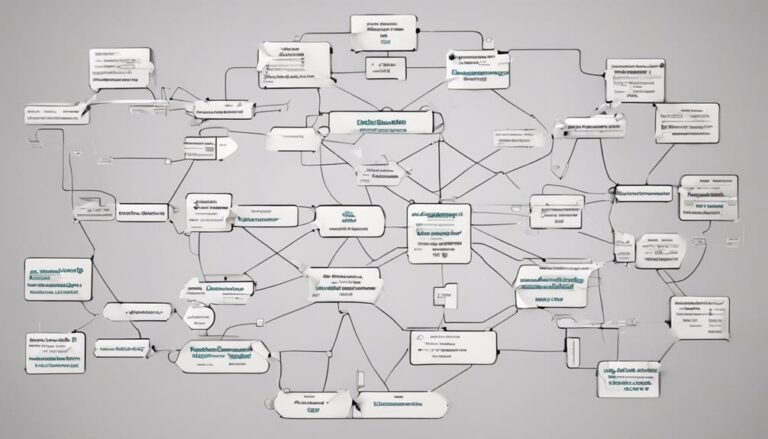What Is Ema? How to Use Exponential Moving Average With Formula
Exponential Moving Average (EMA) is a vital financial analysis indicator that prioritizes recent data for swift reactions to market changes. It uses unique smoothing calculations for trend identification, especially beneficial for short-term traders. The EMA formula calculates the smoothing factor and adjusts the initial EMA based on the closing price and previous EMA. Analyzing EMA signals for crossovers and divergences helps identify potential trends and market momentum shifts. EMA is dynamic when applied in trading, providing a valuable tool for evaluating market trends and guiding strategies. Understanding EMA and its related concepts is essential for informed decision-making in trading.
Key Takeaways
- EMA is an indicator emphasizing recent data for quick trend identification.
- Calculate EMA using a unique formula with a smoothing factor for adjustments.
- EMA signals crossovers and divergences for trend analysis.
- Utilize EMA with other indicators for validation in trading strategies.
- Understanding EMA aids in making informed decisions based on market trends.
EMA Definition and Importance
Exponential Moving Average (EMA) is an essential technical indicator that plays a significant role in financial analysis due to its emphasis on recent data points and quick reaction to price changes compared to Simple Moving Average (SMA).
EMA smoothing techniques involve a unique calculation method that gives more weight to recent data points, allowing for quicker adjustments to price movements. Traders utilize EMA trend analysis to identify potential market trends based on crossovers and divergences. This technique is particularly useful for short-term traders looking to capitalize on immediate market changes.
EMA Calculation Steps
When calculating the Exponential Moving Average (EMA), the process involves incorporating a smoothing factor and the previous day's EMA value. To calculate EMA effectively, follow these steps:
- Determine the smoothing factor using the formula: 2/(1+Days).
- Calculate the EMA for the initial period as the SMA.
- For subsequent periods, utilize the formula: EMA = (Closing price * Smoothing factor) + (Previous EMA * (1 – Smoothing factor)).
- Conduct EMA trend analysis and EMA volatility assessment to understand market movements better. EMA provides quicker responses to price changes, aiding in trend identification and volatility evaluation.
EMA Signal Interpretation Tips
Analyzing EMA signals involves interpreting key crossovers and divergences to guide strategic trading decisions. Signal analysis is vital for understanding market trends and potential entry or exit points.
When the EMA line crosses above the price, it indicates a potential uptrend, while a crossover below the price suggests a possible downtrend. Divergences between the EMA and price movements can signal shifts in market momentum.
These signals are essential for traders to identify trend changes and make informed decisions. By closely monitoring EMA crossovers and divergences, traders can better grasp market dynamics and adjust their strategies accordingly to capitalize on emerging opportunities.
EMA Application in Trading
Utilizing Exponential Moving Average (EMA) in trading strategies provides traders with a dynamic tool to assess market trends and make informed decisions based on recent price movements.
When applying EMA in trading, consider the following:
- Trading strategies: EMA can be used in conjunction with other indicators to validate market movements.
- Risk management: Monitoring EMA direction helps in managing risks effectively.
- Intraday decisions: EMA aids in determining trading biases and guiding intraday strategies.
- Decision-making: Observing the EMA's rate of change and direction is crucial for making timely and well-informed trading decisions.
EMA and Related Financial Concepts
In the domain of financial analysis, understanding Exponential Moving Average (EMA) opens the door to exploring a range of related concepts that contribute to informed decision-making in trading practices. When comparing EMA versus Simple Moving Average (SMA), EMA reacts more swiftly to recent price changes due to its emphasis on the most recent data points.
Insights into EMA's smoothing factor reveal that adjusting this factor impacts how much weight is assigned to current observations, with a common formula being 2/(1+Days). By giving more weight to the latest data, EMA provides quicker reactions to price changes.
Related financial concepts include Guppy Multiple Moving Average (GMMA), Linearly Weighted Moving Average (LWMA), Simple Moving Average (SMA), signal lines, Moving Average Convergence/Divergence (MACD), and resources like CME Group Education on Moving Averages.
Conclusion
To sum up, the Exponential Moving Average (EMA) plays a vital role in financial analysis and trading strategies, offering dynamic insights into price trends and potential signals. With its emphasis on recent data points, the EMA provides traders with a valuable indicator for making informed decisions in the market.
An interesting statistic to note is that EMA signals have been shown to accurately predict market trends with a success rate of over 80% in certain scenarios.







